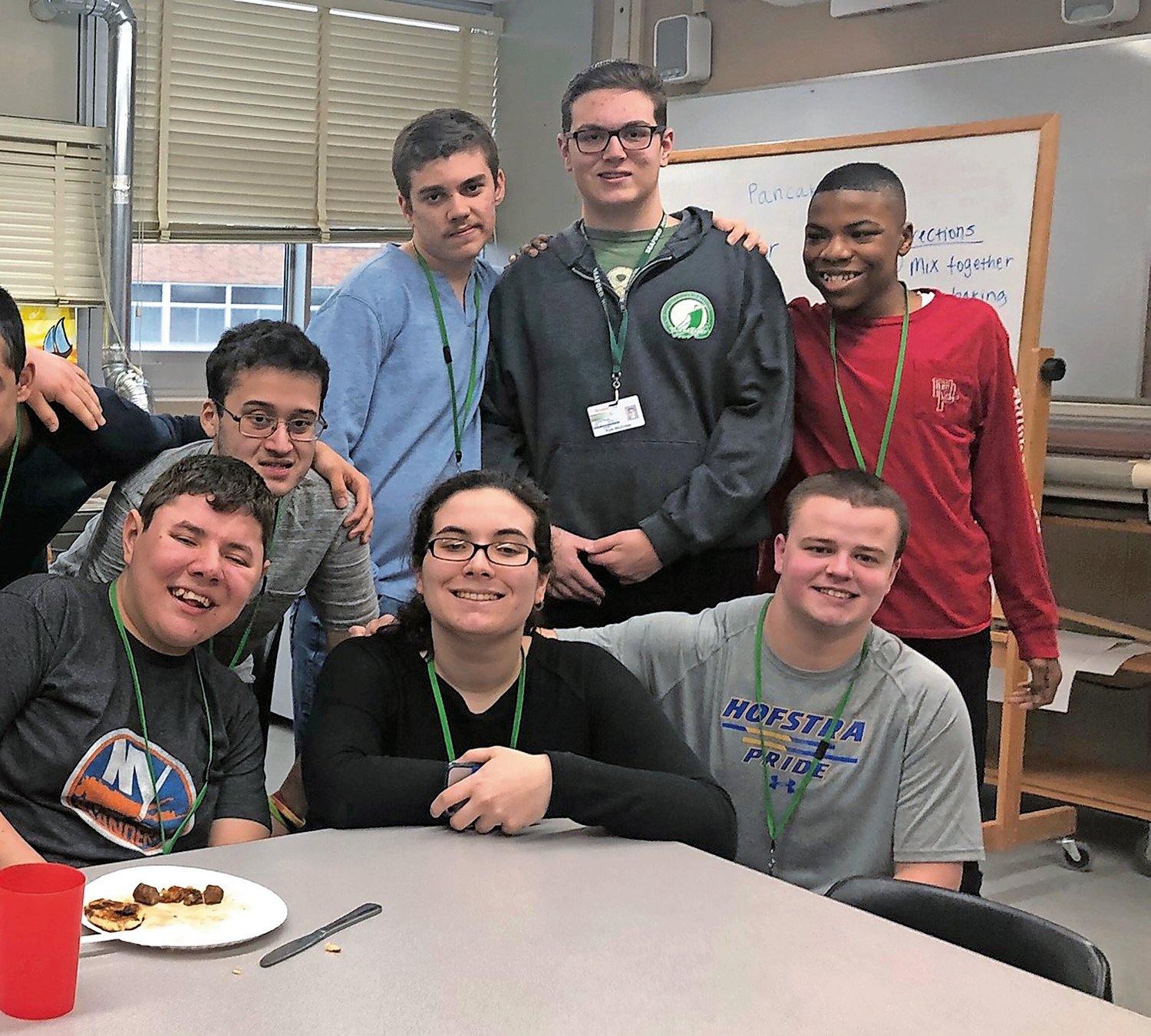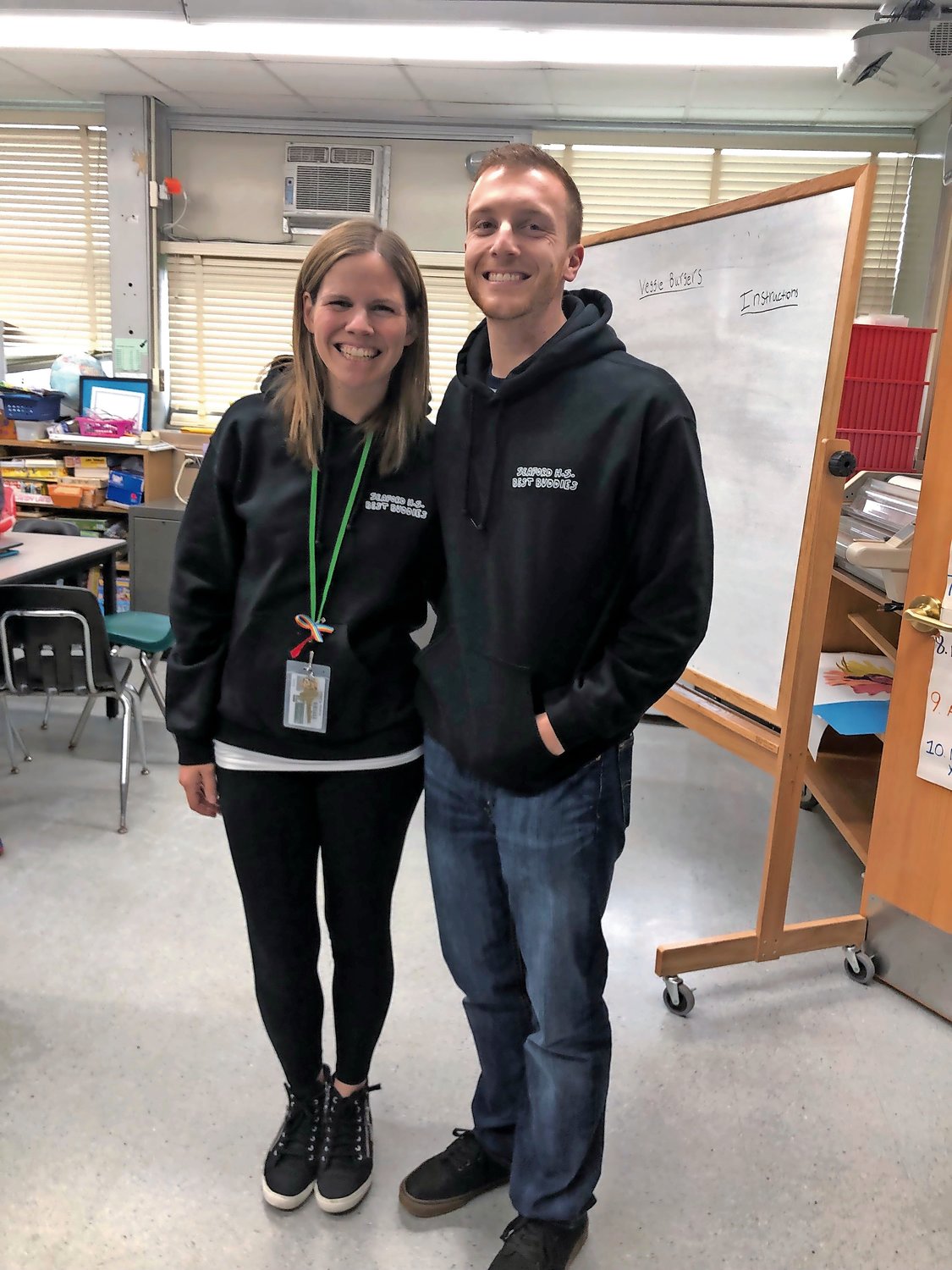Seaford school program focuses on special-needs students
Life-skills program is a different kind of schooling
“Everyone has different needs. Not every student is necessarily going to go to college or the military,” said John Striffolino, the Seaford School District’s assistant superintendent for curriculum, instruction and personnel.
Striffolino, who has worked in the district for 23 years, has seen the success of its Career Development/Life Skills Program for students with special needs, and says it is continually improving. The program’s focus, he explained, is on helping young adults learn life skills and specialized vocational skills on their way to graduation.
“They’re learning valuable daily living skills,” Striffolino said, “and then, working with our vocational department, are starting with in-school jobs before they move on to out-of-school jobs.”
The program is not open to every student with a disability. The state assesses students to see if they are eligible for it before they are placed on the CDP track in middle school — typically at age 14 — under the supervision of special education teacher Angela McGibney.
“We start them on the path where we can funnel them into the high school program and set all the prerequisites,” said the district’s director of pupil personnel services, Mary Catherine Culella-Sun. “Learning all the necessary social skills, that’s the first phase.”
Students do not have to live in Seaford to take part. “The program is open to other districts as well,” Striffolino said. Students who live outside the district do, however, pay a tuition fee, determined by the state, and they account for about 40 percent of the program’s participants.
At the high school, the class is known as CDP-1, and it is overseen by teacher Andrea Russell, who has had worked in special education for over a decade. Striffolino stressed that the students are woven into the fabric of the Seaford High community, from being involved in cheer rallies to Homecoming. They are taught the skills that will help them become independent, and given a variety of in-school jobs as well.
“Some students are working in the cafeteria, preparing cookies and wrapping bagels, some work with the recycling program and help package all the recycled material, and others prepare ice bags for the school nurse,” Culella-Sun said. “Through this, they prove that they can follow direction, communicate effectively and can work in groups.”
They also begin to understand what real jobs are like. Along the way, they learn washing, folding and food prep skills in the school’s Life Skills Suite. The suite, a mock apartment of sorts, is equipped with home appliances including microwaves, a refrigerator, a stove, an oven, a dishwasher, a washer and dryer and an ironing board, as well as a fold-out bed on which students practice changing sheets.
Typically, at 16, students move up to CDP-2, with teacher Steve Anusiak, in which they regularly leave the high school. A few times a week, they take district buses to a variety of job sites, chauffeured by job coaches who help them make the transition to professional settings. Business that have partnered with the program include Stew Leonard’s, Tropical Smoothie, TGI Friday’s, Party City and ACE Hardware.
“The students are given a [variety] of tasks when they take their vocational training to on-site locations,” said Culella-Sun. “They are given experience and the opportunity where they can look for gainful employment after they leave us. It really helps them develop social skills in the workplace.”
According to Culella-Sun and Striffolino, Anusiak has played a key role in the CDP program. Striffolino stressed that integrating the students into the community is one of its chief goals. “[Anusiak] has really been beyond instrumental in job sites accepting us into their business,” Culella-Sun said. “And so has Donna Jebaily.”
Jebaily is a job coach who has overseen the social progression of dozens of students since she got involved in the program in 2016. “The program really is so wonderful,” she said, “and I can’t speak enough on how impactful it is for these kids.”
Career Development Program participants can remain in the program until they are 21, and can graduate from Seaford High with non-Regents diplomas. The state’s Office for People with Developmental Disabilities assesses their readiness to graduate from the program and look for gainful employment. One 2019 graduate, 21-year-old Danielle Palermo, now works part-time in the cafeteria of the high school in her hometown school district.
“This program is one of the greatest prides of my life,” Culella-Sun exclaimed. “It’s a shining star in the Seaford District.”

 50.0°,
Overcast
50.0°,
Overcast 







